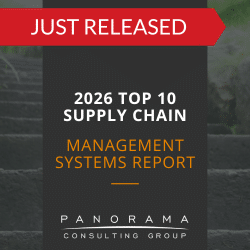As you’ve heard us argue again and again, the key to a successful ERP implementation is organizational change management. It ensures your people are ready for the new system, enthusiastic about the changes it will bring and aware of how the system will affect their individual jobs. Granted, it all sounds very “soft,” which is why many budget slashers assume change management is an unnecessary line item and cut it freely.
Even in organizations that realize the value of change management, there is often a steeper hill to climb first: a repositioning of overall corporate culture.
The Beginner’s Guide to Digital Transformation
What are the 6 secrets to digital transformation that are helping organizations build competitive advantage?
Think for a moment, honestly, about your organization’s corporate culture. What words spring to mind? Supportive? Progressive? Collaborative? Fearful? Back-biting? Angry? Think of the way you, as a company, do things. Are you bogged down by processes? Do you trust individuals to make their own decisions or is there an element of micro-managing? Are you understaffed and stressed out or overstaffed and unaware of what each team member is contributing? How is your staff’s motivation? How is your retention? How does your staff react to change?
Answers to these questions might expose some hard truths about your corporate culture. Hard truths that can be made all the more worrisome by an impending ERP implementation. But there are several ways to adjust and modify the overall values of your organization. Here are just a few of the essential concepts:
1. Leadership. This is number one, as it always is. Change comes from top, and executives must be the ones delivering corporate messaging about the values, vision and overarching purpose of the organization. Leaders must also embody these cultural touchstones with everything they do. Print them up and hang them on the wall if you need to; just make sure everybody knows where the ship is headed and who’s at the helm.
2. Recognition. Make sure your priorities are clear by rewarding those who reflect them. Recognition is effective at all levels, from a simple card to a public display, and serves to put your money where your mouth is by showing that the organization truly values and supports the people who help it achieve its vision.
3. Betterment. Organizations that “do it right” revisit and restructure their corporate culture again and again. Nothing is stagnant. Instead, leadership analyzes competitors and clients within its industry and successful companies outside of its industry to establish benchmarks and best practices and then makes adjustments.
Textbooks could be (and have been) filled with strategies and tactics to improve corporate culture and create alignment. The answers are out there if you need them. The key, however, is to ensure – before embarking on an ERP implementation – that your organization’s culture is something your employee’s can lean on when seas get choppy. Panorama’s ERP consultants can ensure that you include change management in your implementation strategy from the very beginning.













